Apache Kafka

Plan
Theory 1 - Exercice - Theory 2 - Gems - Shopmium
Theory - Part 1
Hands-on exercice
Theory - Part 2
ruby-kafka & Karafka gems
Shopmium ↔ Quotient
Principles
Basics
Topics & partitions
Consumers
Producers
Kafka APIs
Theory 1 - Exercice - Theory 2 - Gems - Shopmium
What?
Events streaming framework
Instead of storing objects with state in a db, we reason with logs of events.
Events driven architecture

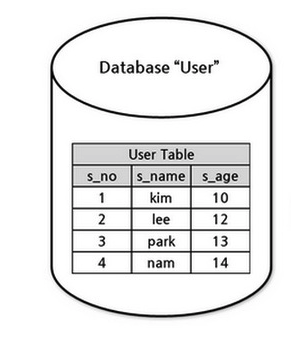
vs
Kafka = (distributed) system to manage the logs
Theory 1 - Exercice - Theory 2 - Gems - Shopmium
Pub-sub messaging architecture
Producer - Cluster (brokers) - Consumer

Protocol used: ≠ HTTP
→ persistent connection
Continuous flow of events between services
Microservices that communicate through Kafka
Theory 1 - Exercice - Theory 2 - Gems - Shopmium
Message bus (redis + sidekiq) ≠ Streaming platform
- Sidekiq, Resque, etc. → once the events are taken from the queue, they disappear
- Kafka → consumer does not impact the messages

Theory 1 - Exercice - Theory 2 - Gems - Shopmium
Usages
Real-time data flow
Microservices that communicate through Kafka
Theory 1 - Exercice - Theory 2 - Gems - Shopmium

Topics
Topic = log = ordered and immutable collection of events
- events stored for a set period of forever
- multi-producers and multi-subscribers (0..n)
- events are not deleted after consumptions
- clients cannot update or delete messages

Theory 1 - Exercice - Theory 2 - Gems - Shopmium
Partitions
A topic is divided in partitions (≠ nodes in the cluster)
So actually a log = a partition

- Kafka = distributed system. Necessity to distribute a topic for scalability
- consumer and producers subscribe to a topic (all partitions)
- a consumer will get messages from all partitions
Theory 1 - Exercice - Theory 2 - Gems - Shopmium
Consumers
- can start reading messages from the current position or from any offset
- always reads messages in order, without stopping
- asks messages when it is ready to handle them
super flexible (shuts down → catch up with unprocessed messages) - consumer offset is also stored in special topic
- immutable topics → can be read by multiple consumers at the same time (independently, ≠ speeds, from ≠ offsets)

Theory 1 - Exercice - Theory 2 - Gems - Shopmium
Messages
Message = key-value pair
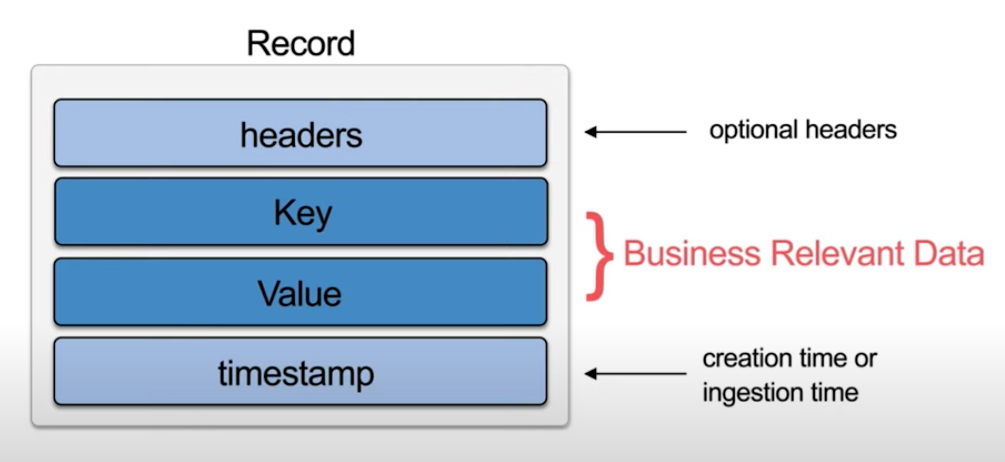
Theory 1 - Exercice - Theory 2 - Gems - Shopmium
Producers

Theory 1 - Exercice - Theory 2 - Gems - Shopmium
- just writes messages
- much simpler than consumer
- decides on which partition to write (based on key is present)
- the broker acknowledges the message once it's commited

Hands-on exercice
Theory 1 - Exercice - Theory 2 - Gems - Shopmium
Consumer groups
- useful for consumers scalability (can be distributed across machines)
- the same consumer application can be split across
- Automatic rebalancing process
- Automatic horizontal scalability
- Number limited by the nb of partitions

Theory 1 - Exercice - Theory 2 - Gems - Shopmium
Partitions
A topic is divided in partitions (≠ nodes in the cluster)
So actually a log = a partition

- Kafka = distributed system. Necessity to distribute a topic for scalability
- consumer and producers subscribe to a topic (all partitions)
- a consumer will get messages from all partitions
Theory 1 - Exercice - Theory 2 - Gems - Shopmium
Kafka APIs
Theory 1 - Exercice - Theory 2 - Gems - Shopmium
Built-in tools
Admin
Kafka Streams
Processing data between topics, aggregations, joins...
Kafka Connect
Integration with db, search indexes (Elastic Search...), key-value stores (Redis...) - Read and write
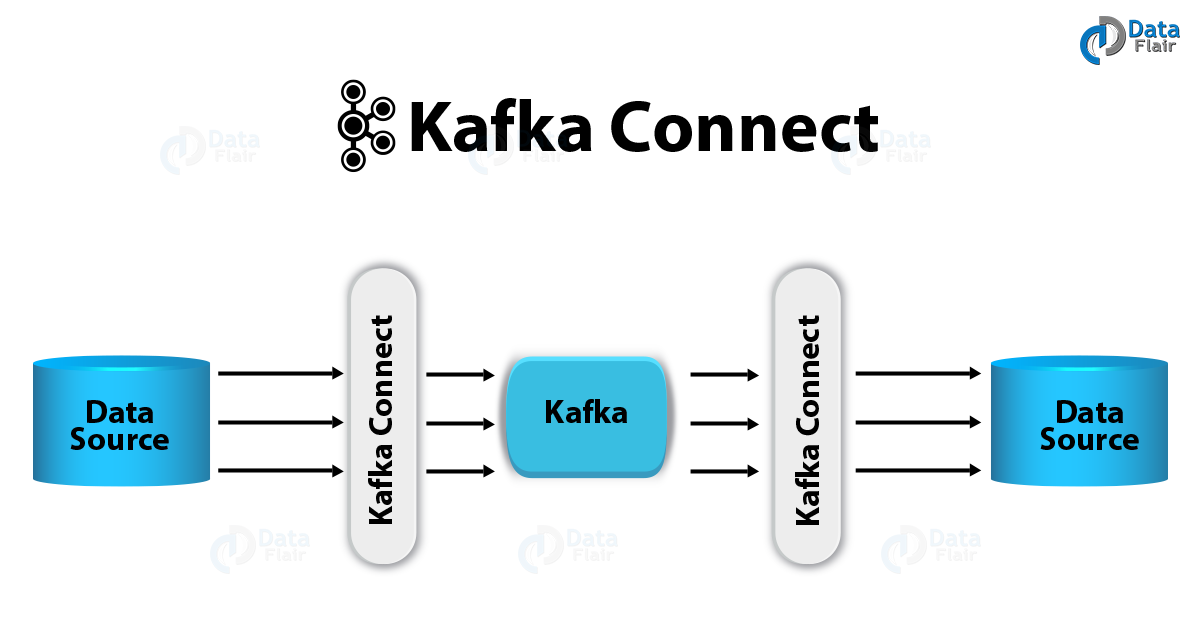
Possibilité d'orchestrer facilement Producer + Consumer + dbs avec Connect + Streams...
Kafka APIs
Theory 1 - Exercice - Theory 2 - Gems - Shopmium
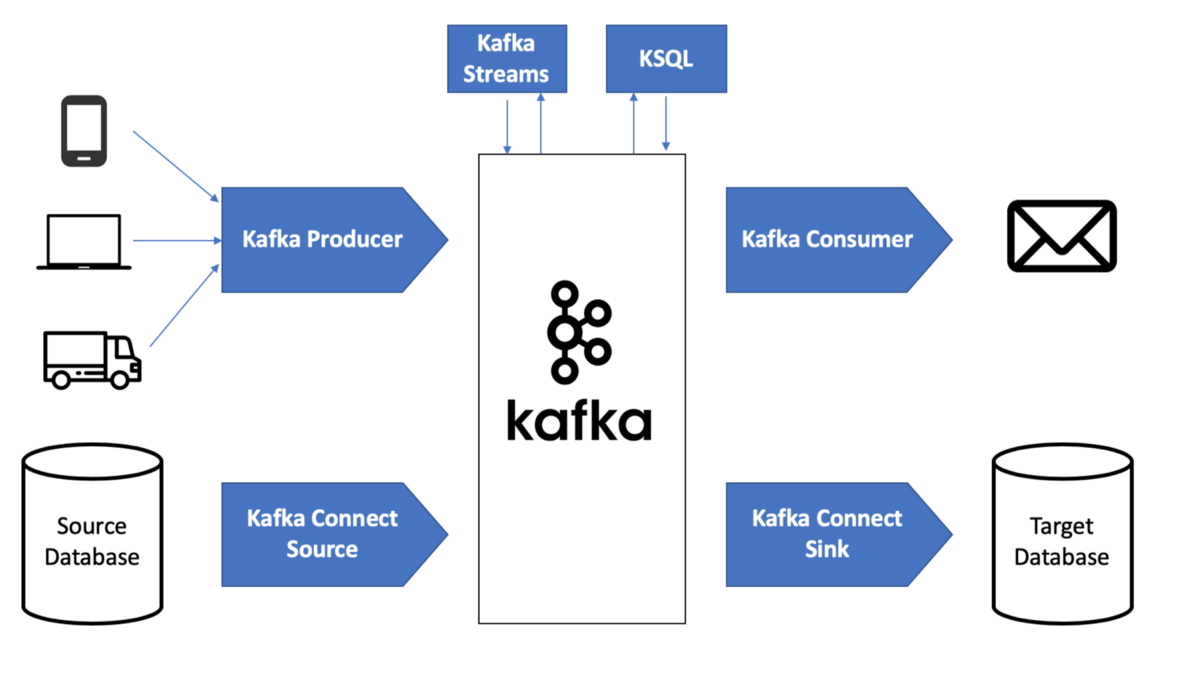
Kafka APIs

Theory 1 - Exercice - Theory 2 - Gems - Shopmium
Brokers
- Cluster = several brokers, which manage partitions
- Replication:
1 leader
n followers
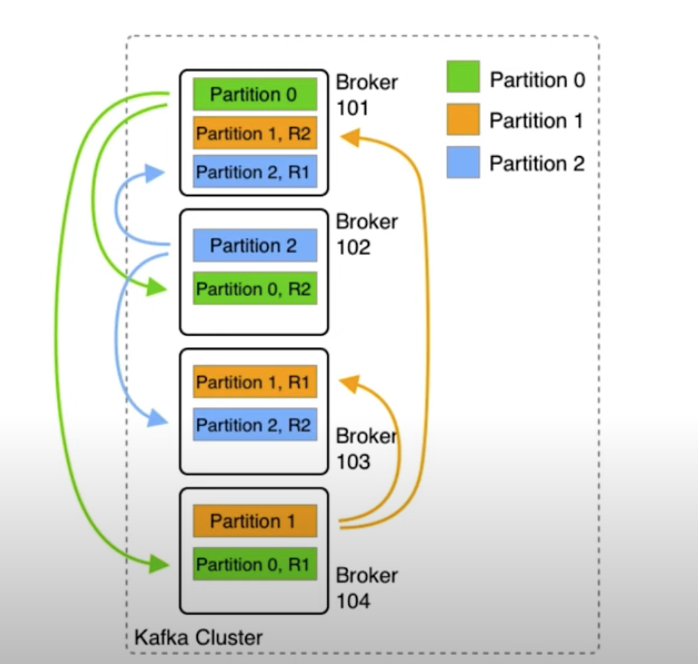
Theory 1 - Exercice - Theory 2 - Gems - Shopmium
Decoupling
Principle of pub sub pattern
- Slow consumers do not affect producers
- Consumers can be added without affecting producers
- Failure of consumer does not affect system

Theory 1 - Exercice - Theory 2 - Gems - Shopmium
Highly scalable
The brokers are easily scalable (horizontally)
→ No limit to the throughput of events (unlike a db)
Kafka brokers, do not track any of its consumers. The consumer service itself is in charge of telling Kafka where it is in the event processing stream, and what it wants from Kafka.
Theory 1 - Exercice - Theory 2 - Gems - Shopmium
Scalability
Highly scalable: Netflix, LinkedIn, Microsoft : trillions of events per day in their clusters
Uber
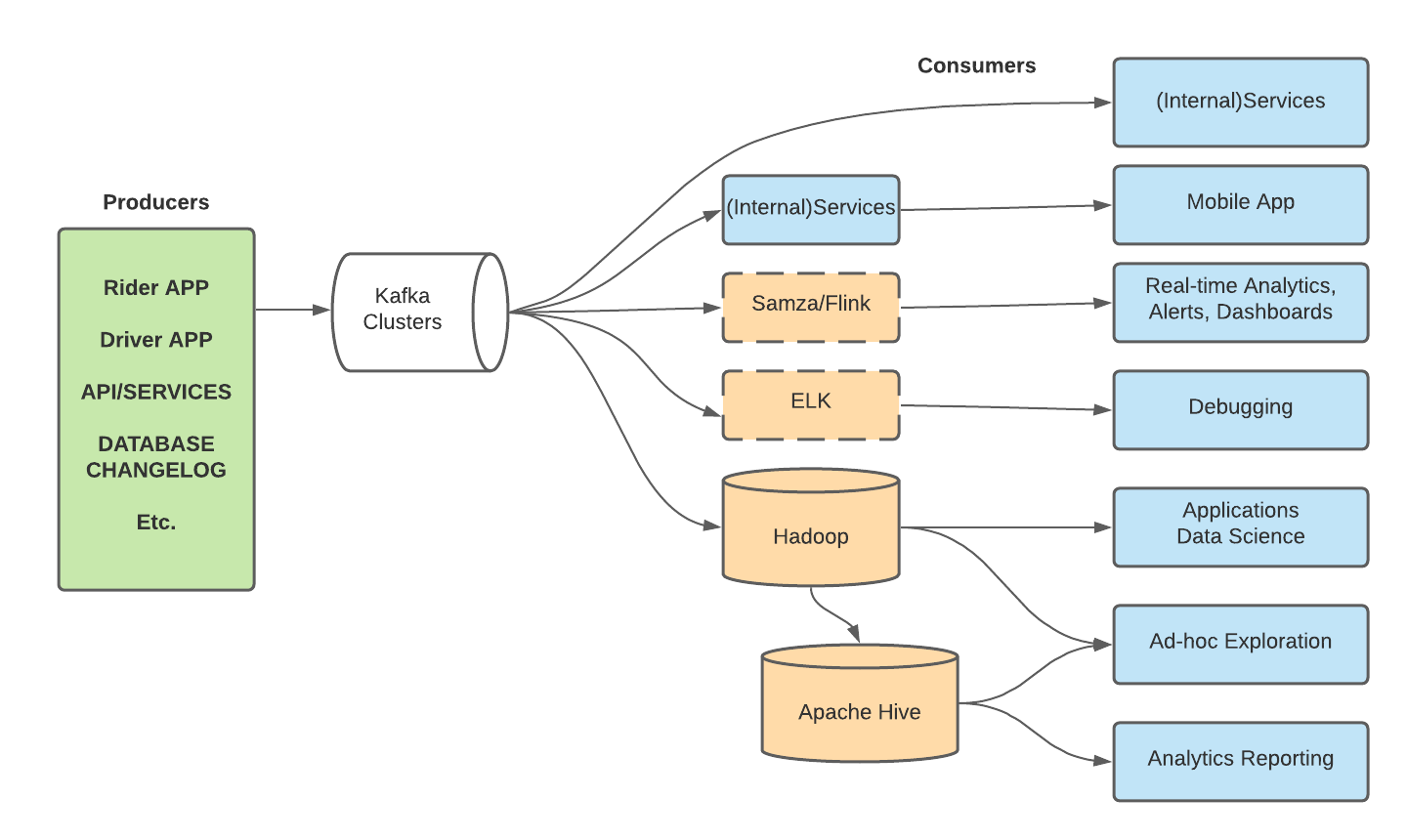
Theory 1 - Exercice - Theory 2 - Gems - Shopmium
ruby-kafka
https://github.com/zendesk/ruby-kafka
Wrapper around Kafka Consumer and Producer API
Built-in tools for instrumentation
Theory 1 - Exercice - Theory 2 - Gems - Shopmium
karafka
https://github.com/karafka/karafka
framework
higher-level abstraction
manages low-level logic (handling errors, retries and backoffs; consumer-groups; concurrency; brokers discoveries...)
cf. config files

Shopmium
Theory 1 - Exercice - Theory 2 - Gems - Shopmium
Resources
Apache Kafka
By durev
Apache Kafka
- 150

